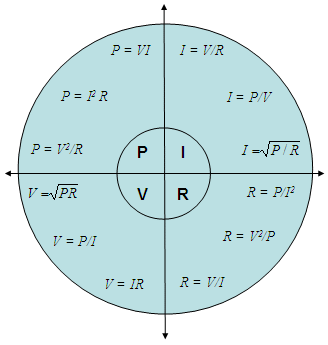

Ohm’s law Calculator
Voltage (V) is the
difference in electrical potential
between two points in an electronic circuit, and it is measured in
volts (V). Current (I) is a
flow of electrons on a conductor, and it is
measured in amperes (A). Resistance (R)
determines how much current will flow through
an electrical device. Resistors are used to control or limit voltage
and
current levels. A high resistance will allow a small current to flow. A
low
resistance will allow a larger current to flow. Resistors are measured
in ohms. Power (P) is the voltage multiplied by the current, and it’s measured in watts (W).
Ohm’s law Pie Chart Electrical Calculations
Let’s say that a 12V car
battery is connected to a 3 ohm
light bulb. What is the voltage measured at the light bulb? We can use our calculator
and enter V = 12.0 V We get I = 4.0 A
|
| Please
enable JavaScript codes on this page. The calculator uses them. |
| |
From 'Ohms Law Calculator' to home
From 'Ohms Law Calculator' to Free Online Calculators
| Top Creative Electronic Projects Electronic Experiments Electrical Calculations |

